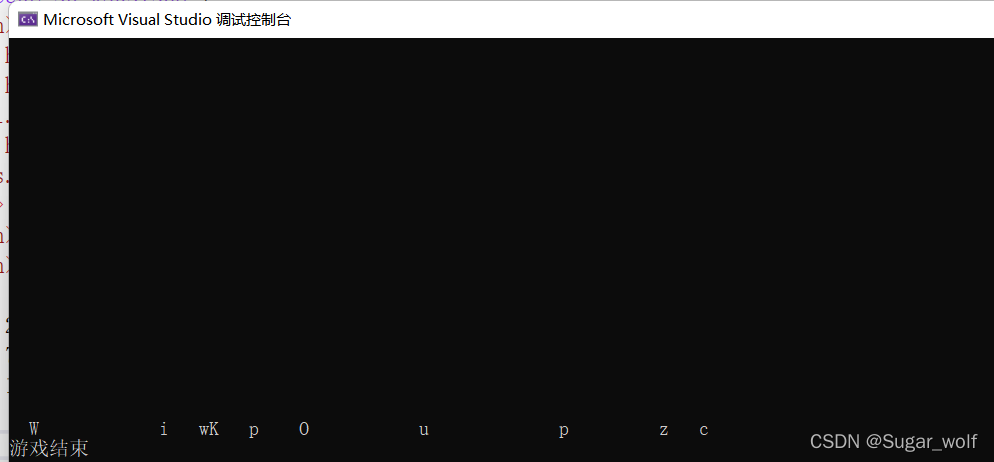1.项目需求:
随机产生一个字母从屏幕下落,玩家输入字母,如果和显示字母相同,就消去字母;游戏会再随机产生一个字母,继续游戏,如果字母落出屏幕,玩家失败,游戏结束;
2.项目分析:
项目由两个模块构成:
1.显示模块 : 显示模块由二维数组构成,把随机产出的字母赋值到二维数组中。
2.处理模块 : 处理模块功能有:随机产生字母 ,输入字母比较,字母是否落出屏幕,字母下降功能;
3.项目设计:
3.1设计字母结构体:
struct LetterNode
{
char ch;
int row;
int col;
};
3.2屏幕大小:
#define ROWSIZE 20 // 行
#define COLSIEE 70 // 列
typedef char GridArray[ROWSIZE][COLSIEE + 1]; //二维数组的 网格
#define LETSIZE 1 // 产生的字母数
3.3 添加二维数组空格函数 LnitGrid(GridArray ga)
void LnitGrid(GridArray ga) //
{
for (int i = 0; i < ROWSIZE; i++)
{
memset(ga[i], ' ', sizeof(char) * COLSIEE);
ga[i][COLSIEE] = '\0';
}
}
3.4 显示网格 ShowGrid(GridArray ga, struct LetterNode* px, int n)
清屏函数:system(“cls”); 头文件: #include <windows.h>
void ShowGrid(GridArray ga, struct LetterNode* px, int n)
{
assert(px != NULL);
system("cls"); //清屏
LnitGrid(ga);
for (int i = 0; i < n; ++i)
{
ga[px[i].row][px[i].col] = px[i].ch;
}
for (int i = 0; i < ROWSIZE; ++i)
{
printf("%s \n", ga[i]);
}
}
3.5 产生随机字母函数 RandLetter(struct LetterNode* px, int n)
void RandLetter(struct LetterNode* px, int n)
{
assert(px != NULL);
srand((int)time(NULL));
for (int i = 0; i < n; i++)
{
px[i].ch = rand() % 26 + 'a';
px[i].row = 0;
px[i].col = rand() % COLSIEE;
}
}
3.6 main函数
_kbhit() : //键盘是否有输入 头文件:#include<conio.h>
int main()
{
GridArray ga;
char ch;
struct LetterNode x[LETSIZE] = { 0 };
RandLetter(x, LETSIZE);
while (1)
{
ShowGrid(ga, x, LETSIZE);
Sleep(1000); //1000毫秒 == 1 秒
if (_kbhit()) //键盘是否有输入
{
//ch = getchar();
ch = _getch(); //无需等待回车输入
if (ch == x[0].ch)
{
x[0].ch = rand() % 26 + 'a';
x[0].row = -1;
x[0].col = rand() % COLSIEE;
}
}
x[0].row += 1;
if (x[0].row >= ROWSIZE)
{
printf("游戏结束 \n");
break;
}
}
return 0;
}
3.7 调用的头文件
#define _CRT_SECURE_NO_WARNINGS 1
#include<stdio.h>
#include<stdlib.h>
#include<string.h>
#include<stdbool.h>
#include<assert.h>
#include<Windows.h>
#include<time.h>
#include<conio.h>
#include<ctype.h>
运行结果:
